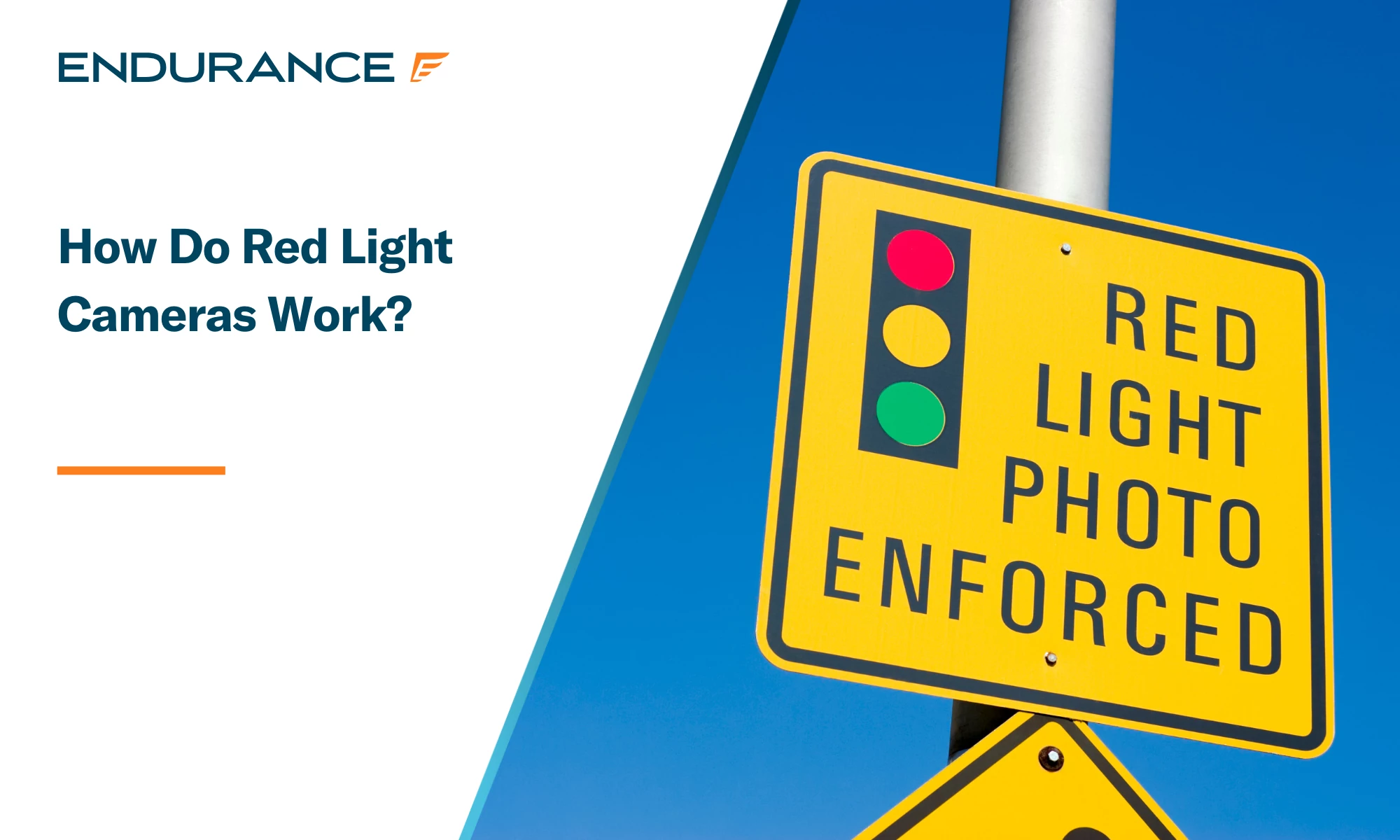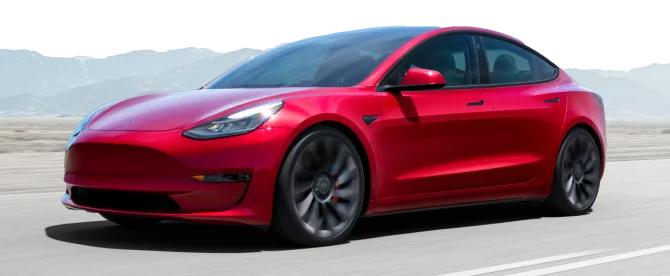How Do Red Light Cameras Work?

Red light cameras have become an all-too-familiar feature at intersections in cities across the United States, playing a crucial role in traffic law enforcement and general road safety. The automated systems these cameras are based on are designed to capture images and video of vehicles that run red lights, thereby helping to reduce violations and prevent accidents.
Some drivers certainly see red lights as a necessary deterrent, like parking tickets, but other drivers see them as a controversial enforcement system that raises ethical questions about accuracy, fairness, and privacy. By developing an understanding of how red light cameras actually work, you can avoid violations while also staying informed as to your rights if you receive a ticket.
What Are Red Light Cameras?
In the event you’re a newer driver or just need an overall refresh, the red light camera program is a traffic enforcement program installed at intersections for the purpose of monitoring and penalizing drivers who fail to stop at red lights. They used advanced sensors and high-resolution cameras that, when working together, detect and document violations.
The main purpose of red light cameras is to improve overall road safety by discouraging reckless driving. In fact, these lights are so effective that the Insurance Institute for Highway Safety documented a 21% perceived reduction in crash fatalities in major cities as a result of them. While the primary function is to promote safer driving habits, they have also sparked debate over issues like potential inaccuracies, fairness in overall ticketing, and whether they are used more for the purpose of revenue generation than traffic safety.
How Do Red Light Cameras Detect Violations?
Red light cameras use a unique blend of sensors, cameras, and computer algorithms to detect and record any red light violations. This ends up being around a four-step process:
- Sensor Activation: Red light cameras are equipped with road sensors embedded in the pavement near intersections, which detect the movement of vehicles and their speed as they approach, including whether the vehicle is at a complete stop.
- Calculation of Timing: If a vehicle enters the intersection after the light has turned red, the sensors will be tripped, and the camera system will be triggered.
- Image and Video Capture: When the violation is detected, the safety camera captures a high-resolution image or video clip, including the license plate, the driver, the color of the traffic light, and the position of the vehicle.
- Data Processing: The automated system will compile all of the evidence and timestamp (or time of the violation) it so that the authorities have all the necessary details to determine if a ticket should be issued.
What Happens After a Red Light Camera Captures a Violation?
After a red light camera records a violation, the review process will begin. If the light is part of an automated system, then the ticket will just be sent out to whoever is registered to that vehicle in the DMV motor vehicle system. However, if in an area where the cameras are reviewed, a law enforcement traffic official will verify all details such as the speed, position before and after the light, and whether there was a valid reason for entering the intersection.
Assuming the ticket is justified, the citation will be received along with photographic evidence of the violation, a description of the infraction, and instructions on how to pay the fine or contest the issue.
Are Red Light Camera Tickets Automatic or Reviewed by Humans?
As alluded to many times, there are certain jurisdictions where red light runner tickets will automatically send out a ticket. Take solace in the fact that this is a rarity. Most jurisdictions still require a police officer or public safety official to review all of the evidence before a ticket is sent out in accordance with state law, though your area may have different rules.
Regardless of whether the ticket was automated or stamped for approval by the police department, you may still feel as if you want to appeal. This is certainly your right, and while every appeal process can vary, the general process is as follows:
- Submit an appeal online or by mail with supporting evidence
- Attend a hearing where the footage is reviewed by a judge or traffic official
- Prove documentation, such as who the registered owner of the vehicle is, dashcam footage, or witness statements, to dispute the claim
- Receive a verdict and/or points on your driver’s license (depending on the state)
How to Avoid Red Light Camera Violations
While red light safety cameras serve as a deterrent for dangerous driving, avoiding violations will require practicing safe and defensive driving techniques. Below are some key tips all motorists should follow to reduce the likelihood of receiving a ticket for a violation:
- Pay close attention to traffic signals and try to anticipate whether they may change before entering the intersection.
- Never speed up to try and beat the light.
- Avoid using your phone or other distractions while driving so that you can be aware of traffic flow and can brake early if necessary.
- Understand your state’s local laws about making a right turn on red, as some areas allow it.
- Familiarize yourself with which intersections have red light cameras and their stop lines so that you can sharpen up as necessary.
How Endurance Auto Protection Plans Can Keep Drivers Covered
For drivers who are just now starting to practice some of those healthy driving habits, it’s worth noting that any frequent stopping or sudden braking you were doing in the past likely put significant strain on your vehicle’s braking system. This, along with other wear and tear items that build up over time, can lead to a mechanical breakdown while you’re on the road. Considering the average car repair cost is $838, finding yourself on the hook for an expensive repair can be devastating to your budget.
Fortunately, Endurance Warranty offers customizable auto protection plans you can add to your vehicle’s coverage. Our protection plans, commonly referred to as extended warranties, range from high-level stated coverage with the Secure Plus plan to protection most similar to the manufacturer warranty that accompanies a new car with the Supreme plan. Whether you’re seeking coverage for your braking system, engine and transmission, electrical components, or even certain high-tech parts, Endurance has something to offer with the customizability that comes with each plan.
On top of this, all Endurance vehicle service contracts come with one year of our Elite Benefits package. These bonus perks include complete tire repair or replacement, collision discounts, key fob replacement, and more.*
Staying Safe on the Road with Endurance
Red light traffic cameras play a vital role in traffic law enforcement by promoting safer driving habits and reducing intersection-related crashes. While these systems help to deter reckless behavior, motorists should continually stay informed about how these cameras work and how to contest tickets if the need arises. While this will keep you protected from accidents, consider also investing in a vehicle service contract from Endurance so that you can be protected from mechanical breakdowns.
Contact our service plan advisors today at (800) 253-8203 or request a FREE quote online. You can also shop our eStore to see your price and plan recommendations.
Check out our extended warranty blog for more on traffic tips, automotive buying guides, FAQs, and more.













Amanda has over 10 years of experience in marketing direct-to-consumer products and services. She is the Content Marketing Manager at Endurance Warranty Services, helping to inform drivers about comprehensive auto protection plans and the latest news in the automotive industry.